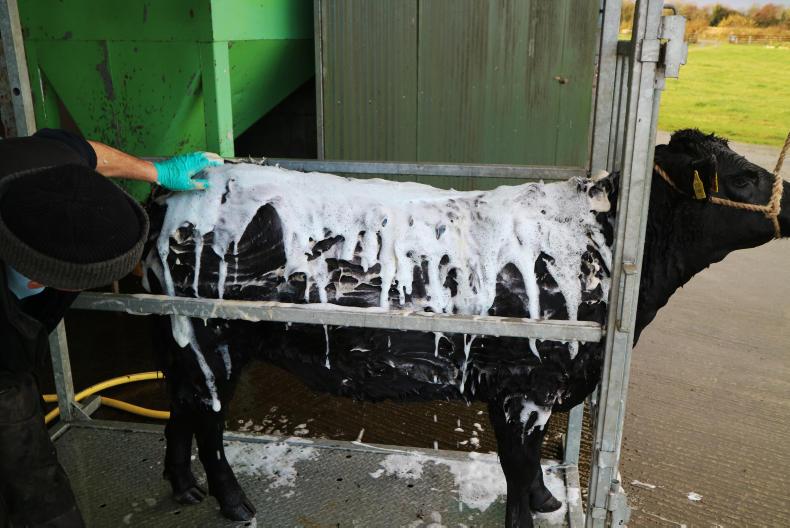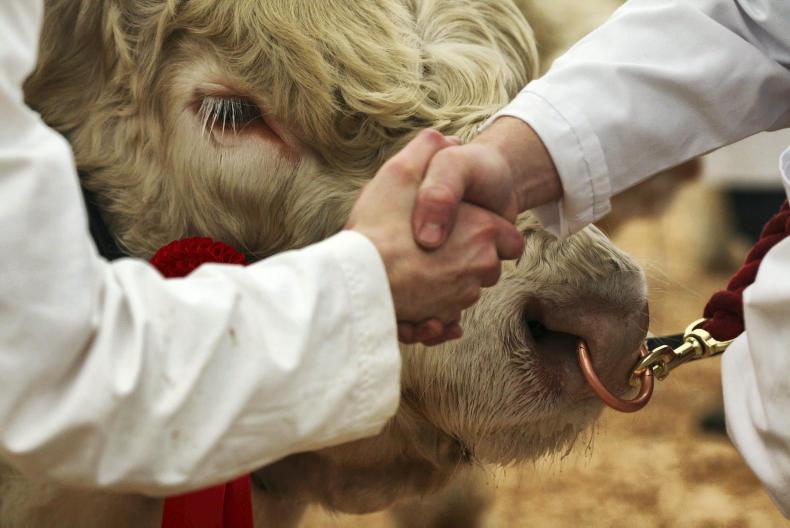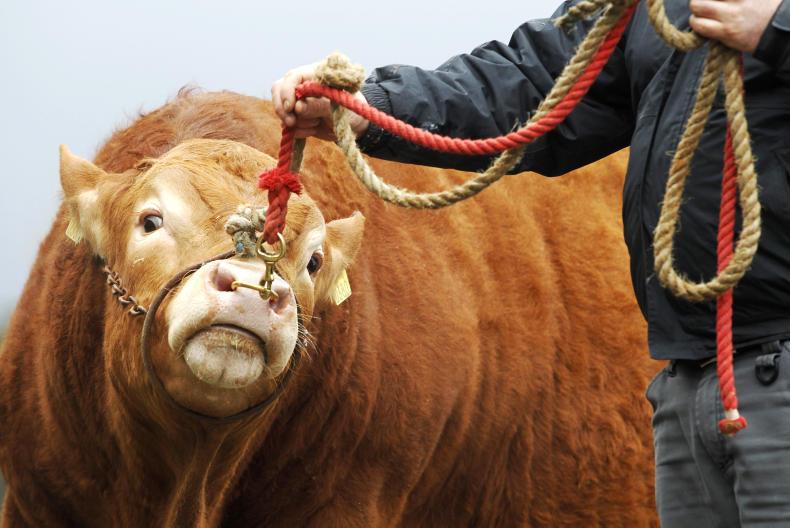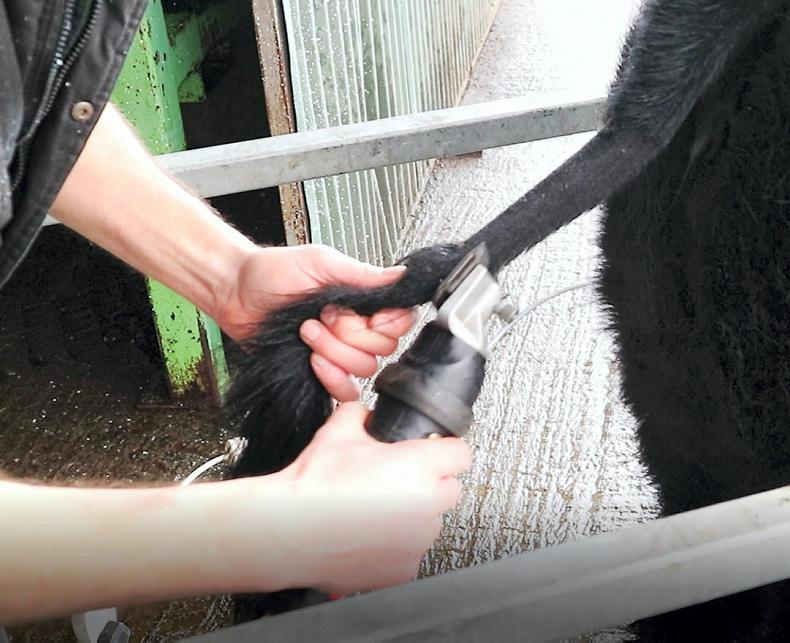Training
From an early age animals are earmarked as show quality and this is often when the training begins. The older an animal gets, the more difficult they are to handle. Initially they have to be haltered and tied and taught to stand still. Once they get used to the halter, you can start to walk them. Ensure you walk them in an enclosed yard so if they do get excited you can let go of the harness without them getting away. Some animals can be giddy and easily startled in the beginning. The sooner you start training the animal the easier they will be to handle and get control of. Even when handling young stock it is important to approach the animal with caution as the kick from a young calf can still break bones. Where possible, approach the animal from the front and halter it as soon as you have gained control.

Electricity when washing and clipping the bull
When you are washing the animal, ensure that all electricity sources are sealed with the correct covers and where possible stay away from sockets and switches altogether. If you are clipping or shearing the animal, make sure all of the cables are out of reach of the animals so that they don’t chew the cords and get electrocuted. At the show, ensure the cables are not in the line of traffic so they are not trampled or driven over. Where possible, try to cable-tie the wires to gates and posts so that the animals and the people working around the animals don’t get tangled in them.
Loading and unloading
When loading the animal into the trailer, always plan an escape route if the animal charges or turns on you. Never put young children or elderly people in enclosed areas with animals. If you are leading the animal into the trailer, make sure the front gate is open and you have a quick escape route. If there is no front door, never enter the trailer in front of the animal as you could get trapped. Showing animals can involve a lot of travelling ans long journeys. Some animals may be used to this and others might not. Travelling can affect different animals in different ways. No matter how quiet or well-trained your animal is, it should still never be fully trusted. Always be careful when working with livestock. Remember that the animal might be used to you but that doesn’t mean that it will react normally in a different environment. Different smells sights and sounds will all affect the animal, so remain vigilant when unloading the animal at the show. Never enter the trailer with the animal in case it decides to turn in the trailer and you could get crushed between the animal and the trailer. Let them exit in their own time or slowly and calmly coax them out.
Handling at the show
Persons handling cattle must be competent, fit and agile. They should practice good personal hygiene and wear appropriate personal protective equipment (eg steel toecap boots). Always carry some sort of stick or paddle while handling the animal to control it. Halters should be fitted correctly and with bulls a separate handling rope should be clipped to the ring on their nose for extra control. Wild and excitable animals should never be brought to shows. If they get agitated at the show they can pose a serious risk to the public. The very nature of these shows means that animals are generally not separated from the public.
Children
Summer shows are usually flooded with children. While this is great to see, it does bring some extra risk. Not all of the children at agricultural shows come from a farming background and they might not know the risks associated with livestock, so keep this in mind when showing cattle. If they are walking by make sure they are at a safe distance from the animals. If children want to pet or take a selfie with your animal, help them to do it from a safe angle and ensure the flash is off on their cameras so the animals don’t get spooked.
Emergencies
When working with livestock, keep your mobile phone in your pocket so you can call for help, if needed. Someone else should know where you are and when you expect to return. If possible, try not to work on your own. Keep a first aid box in your vehicle or shed with supplies of plasters, bandages and disinfectant to treat minor cuts and grazes. Ensure you have public liability insurance in place in case somebody does get injured on your farm. In the event an accident does occur, don’t panic. Try to get clear of any immediate danger and then call for help.






 This is a subscriber-only article
This is a subscriber-only article

















SHARING OPTIONS: